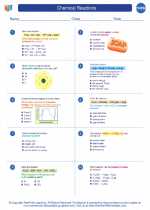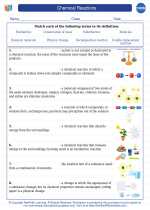Krypton
Krypton is a chemical element with the symbol Kr and atomic number 36. It belongs to the group of noble gases in the periodic table. Here is a detailed study guide for understanding the properties, uses, and significance of krypton:
Physical and Chemical Properties
Krypton is a colorless, odorless, and tasteless gas. It is relatively rare in the Earth's atmosphere, comprising only about 1 ppm. Krypton is characterized by its high boiling and melting points, making it one of the heavier noble gases. It has a full outer electron shell, making it stable and unreactive under normal conditions.
Krypton is chemically inert and does not form compounds easily. However, under certain conditions, it can form compounds such as krypton difluoride (KrF2) and krypton hydride (KrH).
Isotopes
Naturally occurring krypton consists of six stable isotopes, with mass numbers ranging from 78 to 84. Additionally, several radioactive isotopes of krypton have been produced in nuclear reactors and accelerators for various applications.
Uses and Applications
Krypton has several important uses and applications:
- Lighting: Krypton is used in certain types of high-powered, energy-efficient light bulbs, such as krypton-argon incandescent lamps and krypton-filled fluorescent lamps. These applications take advantage of krypton's ability to produce a bright and steady light when electrically charged.
- Photography: Krypton is used in flash lamps for high-speed photography and in the production of high-intensity photographic flashes.
- Medical Imaging: Radioactive isotopes of krypton are used in nuclear medicine for lung ventilation studies and for detecting leaks in nuclear power plants.
- Research and Industry: Krypton is used in various scientific and industrial applications, such as in gas chromatography and as a filling gas for energy-efficient windows.
Significance in the Universe
Krypton, like other noble gases, is produced in stars through the process of nucleosynthesis. It has played a role in the study of stellar evolution and the formation of the universe. Additionally, the presence of krypton in meteorites and lunar samples provides valuable information about the history and composition of the solar system.
Conclusion
Understanding the properties and applications of krypton is essential for appreciating its role in various scientific, industrial, and astronomical contexts. From its uses in lighting and photography to its significance in the study of the universe, krypton continues to contribute to diverse fields of human knowledge and innovation.
.◂Chemistry Worksheets and Study Guides High School. Chemical Reactions

 Worksheet/Answer key
Worksheet/Answer key
 Worksheet/Answer key
Worksheet/Answer key
 Worksheet/Answer key
Worksheet/Answer key
 Worksheet/Answer key
Worksheet/Answer key
 Worksheet/Answer key
Worksheet/Answer key
 Vocabulary/Answer key
Vocabulary/Answer key
 Vocabulary/Answer key
Vocabulary/Answer key
 Vocabulary/Answer key
Vocabulary/Answer key
